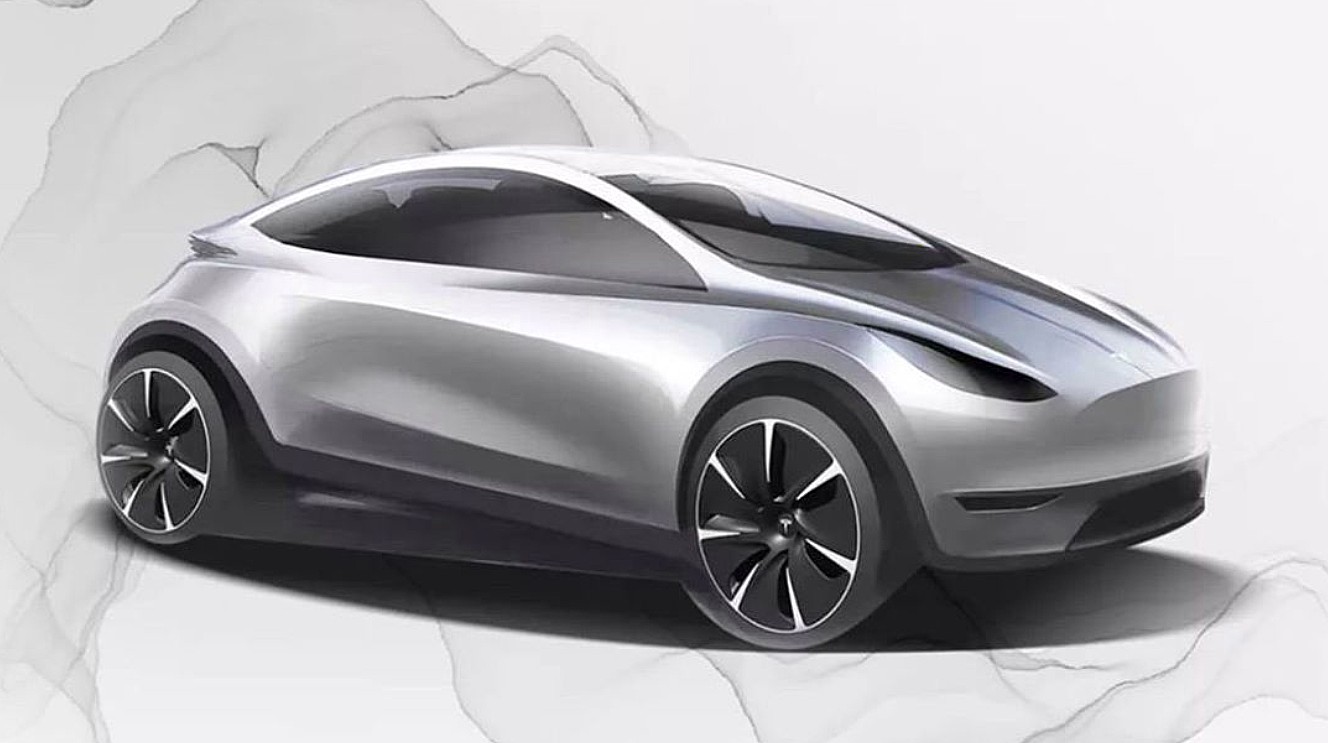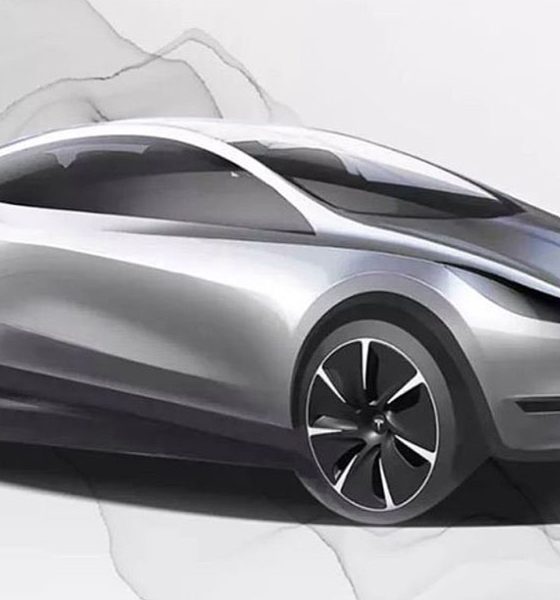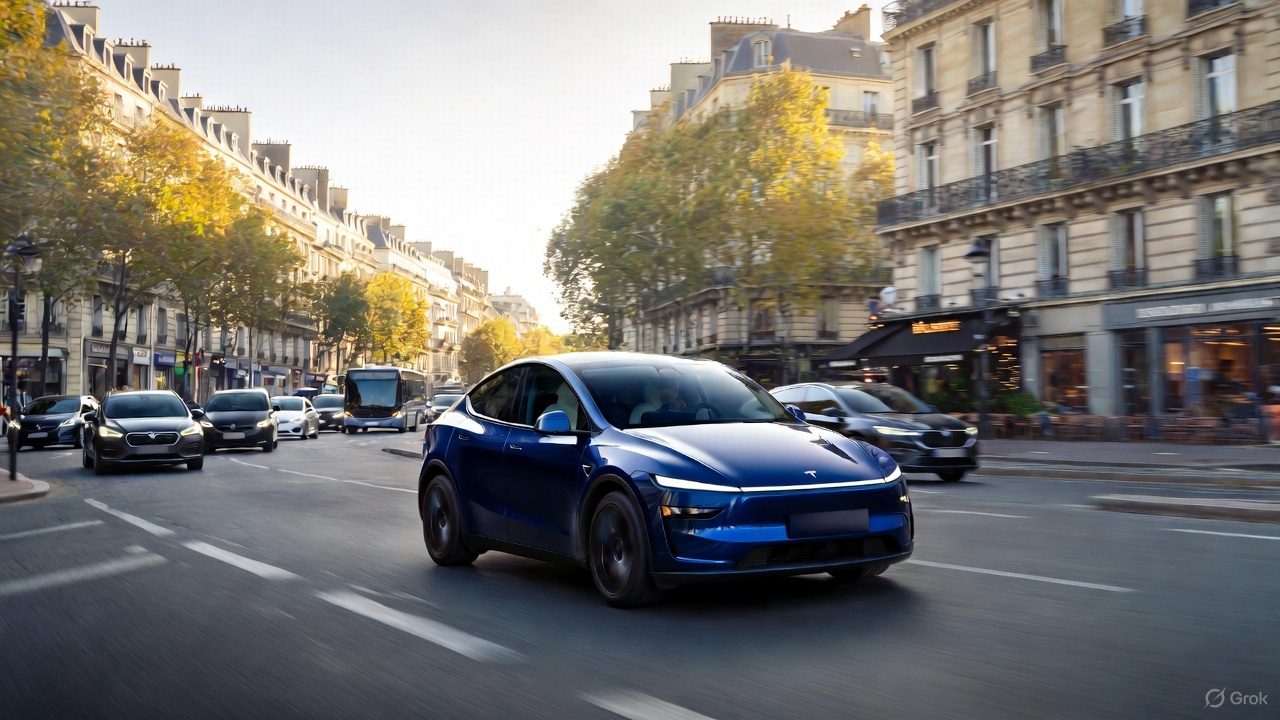

News
Tesla’s next vehicles have the potential to usher in the extinction of gas cars
During the second quarter earnings call, Elon Musk tentatively confirmed that Tesla would be making a compact car and a vehicle with high capacity. Granted, it would probably take a few more years before such vehicles are produced, but one thing seems certain. Considering Tesla’s speed and pace, it would not be surprising if Tesla’s compact car and high capacity EV causes the extinction of the internal combustion engine.
Tesla’s current lineup of vehicles, which comprise the Model S, Model 3, Model X, and Model Y, are great EVs, but they are still fairly large for their class. This includes the Model 3 and the Model Y, Tesla’s “smaller” vehicles in its lineup. This, together with the vehicles’ premium price, end up blocking the company from reaching its full potential in the auto market. With a compact car and a high capacity vehicle, however, things could drastically change for Tesla.
Compact and High Capacity EVs
Tesla has mentioned the creation of a smaller car in the past, and more recently, the company has tapped into China’s creative minds for help in designing its compact car. This vehicle is expected to be designed and manufactured in China, but the opportunities for such a car go far beyond the country. Compact cars have a dedicated following, after all, and for good reason.
A higher capacity vehicle is also a key part of the mass market puzzle that Tesla could tap into. Higher capacity vehicles could come in many forms, like vans that could either transport people or cargo. Fellow EV maker Rivian is already involved in the development of electric vans, thanks to its partnership with Amazon. It would then not be surprising if Tesla also dips its feet in the development of its a similar line of vehicles, especially those that it could use for its own operations.
Opportunities in Developing Countries
Tesla’s current S,3,X,Y lineup are still premium cars through and through, and one thing that they cannot do is compete in a market that prioritizes cost. These markets, such as India and other southeast Asian nations, actually hold a lot of potential for the company. However, for Tesla to enter and compete in these regions, it would have to learn how to play the affordability and practicality balancing game.
Vehicles that thrive in the compact car segment usually offer the best performance and features within a limited price range. The Honda Fit/Jazz (or at least its initial iteration) is a good example of this, as the vehicle was affordable, practical, and still fairly fun to drive. If Tesla could create a vehicle that’s far more affordable than the Model 3 (perhaps in the $20,000 range), then the company could tap into a segment that is, at least for now, still dominated by legacy auto.
The same is true for high capacity vehicles. There is a reason why the compact MPV (multi purpose vehicle) segment exists, after all. MPVs are low cost, relatively bare bones vehicles that are designed to carry as many people or cargo at the lowest price possible. This usually results in vehicles that are not optimized for performance, with small engines and high seating capacity (think a 1.5 liter engine with seven seats). The Toyota Kijang, an example of this type of vehicle, has been around for decades, and for good reason. It simply has a very stable following.
The Tesla Effect and the Extinction of ICE
Interestingly enough, Tesla is already in the process of lowering its production and battery costs. This is one of the reasons why the company has been aggressively acquiring companies that are working on bleeding edge battery tech. Elon Musk is aware of this, as he noted during the recently held earnings call.
“It is important to make the car affordable. We will not succeed in our mission if we do not make cars affordable. Like the thing that bugs me the most about where we are right now is that our cars are not affordable enough. We need to fix that,” Musk said.
Fortunately for Tesla, it has now reached a point where the company is now being emulated by the legacy automakers in an attempt to catch up in the EV transition. The transition to electric cars is pretty much undeniable at this point, so it is now up to Tesla to set the pace. With this “Tesla Effect” in mind, it would be best if the electric car maker could expedite its expansion into other vehicle segments as soon as possible. Doing so would allow the company to accelerate the transition to sustainability.
After all, with vehicles that start at around $20,000 and with high capacity EVs that can transport numerous passengers, there will be very little reason for customers to buy a gas powered vehicle anymore. By taking on and competing in the compact and high capacity segment, Tesla could, effectively, usher in the extinction of the internal combustion engine.

News
Man credits Grok AI with saving his life after ER missed near-ruptured appendix
The AI flagged some of the man’s symptoms and urged him to return to the ER immediately and demand a CT scan.

A 49-year-old man has stated that xAI’s Grok ended up saving his life when the large language model identified a near-ruptured appendix that his first ER visit dismissed as acid reflux.
After being sent home from the ER, the man asked Grok to analyze his symptoms. The AI flagged some of the man’s symptoms and urged him to return immediately and demand a CT scan. The scan confirmed that something far worse than acid reflux was indeed going on.
Grok spotted what a doctor missed
In a post on Reddit, u/Tykjen noted that for 24 hours straight, he had a constant “razor-blade-level” abdominal pain that forced him into a fetal position. He had no fever or visible signs. He went to the ER, where a doctor pressed his soft belly, prescribed acid blockers, and sent him home.
The acid blockers didn’t work, and the man’s pain remained intense. He then decided to open a year-long chat he had with Grok and listed every detail that he was experiencing. The AI responded quickly. “Grok immediately flagged perforated ulcer or atypical appendicitis, told me the exact red-flag pattern I was describing, and basically said “go back right now and ask for a CT,” the man wrote in his post.
He copied Grok’s reasoning, returned to the ER, and insisted on the scan. The CT scan ultimately showed an inflamed appendix on the verge of rupture. Six hours later, the appendix was out. The man said the pain has completely vanished, and he woke up laughing under anesthesia. He was discharged the next day.
How a late-night conversation with Grok got me to demand the CT scan that saved my life from a ruptured appendix (December 2025)
byu/Tykjen ingrok
AI doctors could very well be welcomed
In the replies to his Reddit post, u/Tykjen further explained that he specifically avoided telling doctors that Grok, an AI, suggested he get a CT scan. “I did not tell them on the second visit that Grok recommended the CT scan. I had to lie. I told them my sister who’s a nurse told me to ask for the scan,” the man wrote.
One commenter noted that the use of AI in medicine will likely be welcomed, stating that “If AI could take doctors’ jobs one day, I will be happy. Doctors just don’t care anymore. It’s all a paycheck.” The Redditor replied with, “Sadly yes. That is what it felt like after the first visit. And the following night could have been my last.”
Elon Musk has been very optimistic about the potential of robots like Tesla Optimus in the medical field. Provided that they are able to achieve human-level articulation in their hands, and Tesla is able to bring down their cost through mass manufacturing, the era of AI-powered medical care could very well be closer than expected.
News
Tesla expands Model 3 lineup in Europe with most affordable variant yet
The Model 3 Standard still delivers more than 300 miles of range, potentially making it an attractive option for budget-conscious buyers.

Tesla has introduced a lower-priced Model 3 variant in Europe, expanding the lineup just two months after the vehicle’s U.S. debut. The Model 3 Standard still delivers more than 300 miles (480 km) of range, potentially making it an attractive option for budget-conscious buyers.
Tesla’s pricing strategy
The Model 3 Standard arrives as Tesla contends with declining registrations in several countries across Europe, where sales have not fully offset shifting consumer preferences. Many buyers have turned to options such as Volkswagen’s ID.3 and BYD’s Atto 3, both of which have benefited from aggressive pricing.
By removing select premium finishes and features, Tesla positioned the new Model 3 Standard as an “ultra-low cost of ownership” option of its all-electric sedan. Pricing comes in at €37,970 in Germany, NOK 330,056 in Norway, and SEK 449,990 in Sweden, depending on market. This places the Model 3 Standard well below the “premium” Model 3 trim, which starts at €45,970 in Germany.
Deliveries for the Standard model are expected to begin in the first quarter of 2026, giving Tesla an entry-level foothold in a segment that’s increasingly defined by sub-€40,000 offerings.
Tesla’s affordable vehicle push
The low-cost Model 3 follows October’s launch of a similarly positioned Model Y variant, signaling a broader shift in Tesla’s product strategy. While CEO Elon Musk has moved the company toward AI-driven initiatives such as robotaxis and humanoid robots, lower-priced vehicles remain necessary to support the company’s revenue in the near term.
Reports have indicated that Tesla previously abandoned plans for an all-new $25,000 EV, with the company opting to create cheaper versions of existing platforms instead. Analysts have flagged possible cannibalization of higher-margin models, but the move aims to counter an influx of aggressively priced entrants from China and Europe, many of which sell below $30,000. With the new Model 3 Standard, Tesla is reinforcing its volume strategy in Europe’s increasingly competitive EV landscape.
News
Tesla FSD (Supervised) stuns Germany’s biggest car magazine
FSD Supervised recognized construction zones, braked early for pedestrians, and yielded politely on narrow streets.

Tesla’s upcoming FSD Supervised system, set for a European debut pending regulatory approval, is showing notably refined behavior in real-world testing, including construction zones, pedestrian detection, and lane changes, as per a recent demonstration ride in Berlin.
While the system still required driver oversight, its smooth braking, steering, and decision-making illustrated how far Tesla’s driver-assistance technology has advanced ahead of a potential 2026 rollout.
FSD’s maturity in dense city driving
During the Berlin test ride with Auto Bild, Germany’s largest automotive publication, a Tesla Model 3 running FSD handled complex traffic with minimal intervention, autonomously managing braking, acceleration, steering, and overtaking up to 140 km/h. It recognized construction zones, braked early for pedestrians, and yielded politely on narrow streets.
Only one manual override was required when the system misread a converted one-way route, an example, Tesla stated, of the continuous learning baked into its vision-based architecture.
Robin Hornig of Auto Bild summed up his experience with FSD Supervised with a glowing review of the system. As per the reporter, FSD Supervised already exceeds humans with its all-around vision. “Tesla FSD Supervised sees more than I do. It doesn’t get distracted and never gets tired. I like to think I’m a good driver, but I can’t match this system’s all-around vision. It’s at its best when both work together: my experience and the Tesla’s constant attention,” the journalist wrote.
Tesla FSD in Europe
FSD Supervised is still a driver-assistance system rather than autonomous driving. Still, Auto Bild noted that Tesla’s 360-degree camera suite, constant monitoring, and high computing power mark a sizable leap from earlier iterations. Already active in the U.S., China, and several other regions, the system is currently navigating Europe’s approval pipeline. Tesla has applied for an exemption in the Netherlands, aiming to launch the feature through a free software update as early as February 2026.
What Tesla demonstrated in Berlin mirrors capabilities already common in China and the U.S., where rival automakers have rolled out hands-free or city-navigation systems. Europe, however, remains behind due to a stricter certification environment, though Tesla is currently hard at work pushing for FSD Supervised’s approval in several countries in the region.








